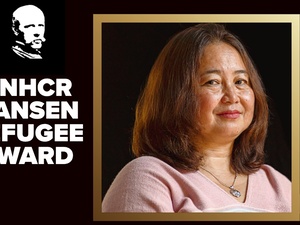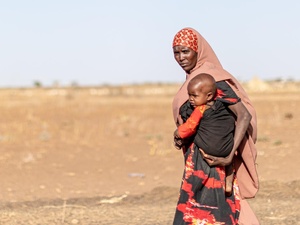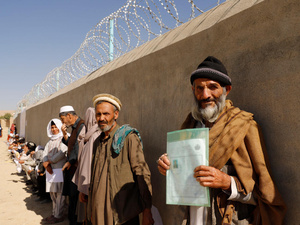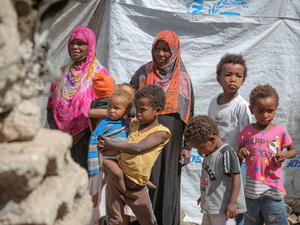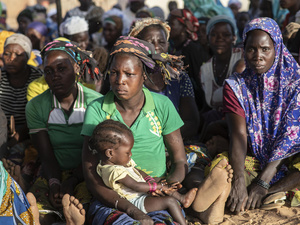UNHCR calls for safe corridors in northern Yemen
UNHCR calls for safe corridors in northern Yemen
The situation in Sa'ada city in northern Yemen remains dramatic. The fighting is ongoing, both inside the city and its surroundings. The town has been practically cut off from the rest of the world for a week now. Yesterday (Thursday), there were reports of continuous fighting between Al Houthi and government forces in northern Yemen, with both parties rejecting a cease fire and vowing to continue the hostilities.
The UN High Commissioner for Refugees, Antonio Guterres, has called for opening humanitarian corridors in northern Yemen that would allow civilians to leave the conflict zone and humanitarian workers to deliver much needed humanitarian aid to thousands of displaced people in this remote part of the country.
The residents, as well as those displaced in Sa'ada city, are unable to leave. The state of emergency is still in force. The markets are closed in the city, resulting in an extreme shortage of food and other commodities as well as drastic price increases. Many are living on assistance from friends and relatives who had been able to store food.
The Al Anad camp in Sa'ada is off limits. The other three sites for internally displaced people (IDPs) are still open but are becoming overcrowded as civilians flee the violence. Together with the authorities, UNHCR has registered 700 families in Sa'ada city and if security permits we plan to distribute initial aid to some 370 families tomorrow.
In neighbouring Amran province, 60 percent of displaced are women and children. Some reported they lost documents as they fled, others are traumatized. About 40 percent of the displaced population is occupying schools, clinics, hangars and barns. Most of the IDPs fled in a rush, leaving behind almost all personal belongings. The authorities told UNHCR the new camp for IDPs will be constructed in Khaywan despite concerns of the humanitarian community that the site may be too close to the conflict zone.
A number of interagency field assessment missions were carried out in Amran, including in Bani Suraim, Al-Osha, Khamir and Amran city where some 180 IDP families were identified. Three schools were identified in Bani Suraim, in Amran city and in Khamir to serve as potential distribution points for humanitarian aid.
Meanwhile, in Al Mazrak camp in Hajjah governorate, IDPs are slowly settling down. Some women built mud and sand ovens to bake bread. UNHCR has distributed tents, plastic sheets, kitchen sets, mattresses, blankets, jerry cans, powder soap, soap bars and sanitary napkins to the displaced people in the camp. To date, 264 tents were erected in Al Mazrak camp. We have conducted profiling and verification of 865 displaced families and provided them with much needed assistance, while our local partner is conducting the profiling and verification exercise for IDPs scattered in the area.
In order to beef up our existing capacities in Yemen we are also deploying a three-member emergency team which includes protection, logistics and site planning experts.


